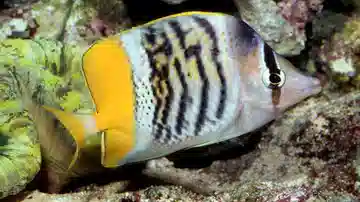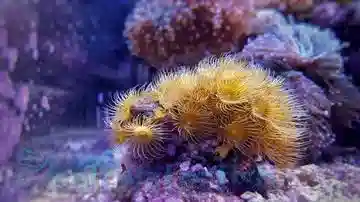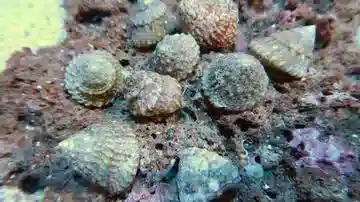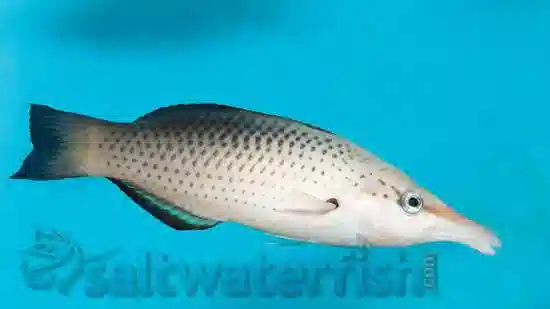Black Bird Wrasse: Female
Gomphosus varius
(1 Reviews)

Black Bird Wrasse: Female
Gomphosus varius
(1 Reviews)
{{ item.name }}
Size: {{ item.extra_field_3 }}
${{ getFormattedPrice(item.saleprice) }} ${{ getFormattedPrice(item.price) }}
To join the waiting list, click here
Free Shipping
With
$199.00
or more in Marine Life.
More details...
Black Bird Wrasse: Female Care Facts
| Care Level: | Moderate |
|---|---|
| Temperament: | Peaceful |
| Diet: | Carnivore |
| Reef Safe: | No |
| Minimum Tank Size: | 100 Gallons |
| Max Size: | 12 inches |
Green Bird Wrasse (Gomphosus varius): A Practical Guide for Saltwater Marine Aquariums
The Green Bird Wrasse (Gomphosus varius) is a captivating species that can make a unique addition to your saltwater marine aquarium. This guide provides essential facts about the Green Bird Wrasse, its care requirements, and why it might be a valuable choice for your aquarium.
Habitat and Adaptation of the Green Bird Wrasse
The Green Bird Wrasse is commonly found in the Indo-Pacific region, inhabiting reef slopes and lagoon areas. They are known for their preference for areas with coral rubble, rocks, and sandy substrate.
Reef Safety and the Green Bird Wrasse
The Green Bird Wrasse is generally not considered reef safe. They are known to be avid coralivores, meaning they may nip at and potentially damage corals in your aquarium.
Size and Lifespan of the Green Bird Wrasse
Green Bird Wrasses can grow quite large, reaching lengths up to 12 inches (30 cm) when fully grown. With proper care, Green Bird Wrasses can live for approximately 5 to 7 years in captivity.
Diet in Captivity for the Green Bird Wrasse
These wrasses feed on small invertebrates and fish in the wild. In captivity, they can be challenging to feed. They require a diet of live or frozen foods like shrimp, squid, and other meaty offerings. Providing them with a varied diet is essential to ensure their health.
Aquaculture Availability of the Green Bird Wrasse
Currently, aquacultured Green Bird Wrasses are unavailable to hobbyists. Most specimens are sourced from the wild.
Sexual Dimorphism of the Green Bird Wrasse
Green Bird Wrasses exhibit sexual dimorphism. Males typically display more vibrant colors and have longer tails compared to females.
Symbiotic Relationships of the Green Bird Wrasse
Green Bird Wrasses do not typically engage in symbiotic relationships with corals or anemones. They are known for their coral-feeding behavior, which can harm reef tanks.
Juvenile vs. Adult Coloration of the Green Bird Wrasse
Juvenile Green Bird Wrasses often display bright green coloration, while adult males develop more complex patterns and colors, including greens, blues, and yellows.
Compatibility with Other Fish of the Green Bird Wrasse
Green Bird Wrasses are known for their somewhat aggressive temperament, particularly towards other wrasses and fish with similar body shapes.
Temperament and Behavior of the Green Bird Wrasse
These wrasses are active swimmers and can be territorial, especially towards other fish. They may not be suitable for peaceful community tanks.
Suitable Tank Mates for the Green Bird Wrasse
Consider compatible tank mates such as Emperor Angelfish (Pomacanthus imperator), Porcupine Pufferfish (Diodon hystrix), Yellow Tang (Zebrasoma flavescens), Niger Triggerfish (Odonus niger), and Kole Tang (Ctenochaetus strigosus).
Tank Requirements for the Green Bird Wrasse
A large tank with at least 150 gallons capacity is recommended to provide ample swimming space. Create a rocky environment with hiding spots and caves to mimic their natural habitat. Live rock structures can help provide hiding places.
Water Conditions for the Green Bird Wrasse
Maintain the pH level between 8.1 and 8.4. Keep the salinity within the range of 1.023 to 1.025. The recommended temperature range is 74°F to 82°F (23°C to 28°C). Moderate to strong water flow is suitable to simulate their natural habitat.
Other Common Names of the Green Bird Wrasse
The Green Bird Wrasse is also known as the Green Maori Wrasse or the Green Coris Wrasse.
Why Choose Green Bird Wrasses from Saltwaterfish.com
Selecting Green Bird Wrasses from Saltwaterfish.com offers marine enthusiasts the opportunity to introduce a visually striking species to their saltwater marine aquarium. Our commitment to providing healthy and well-acclimated specimens ensures you receive robust and vibrant fish for your aquatic environment. With our extensive experience and dedication to marine life, Saltwaterfish.com is a dependable source for enthusiasts seeking quality marine species.
In summary, the Green Bird Wrasse's unique appearance and active nature can make it an exciting addition to your saltwater marine aquarium. However, their coral-feeding behavior and territorial tendencies should be considered when planning their placement in a tank. By adhering to their specific care requirements and selecting suitable tank mates, you can enjoy the dynamic presence this captivating marine inhabitant brings to your aquarium.
Reviewed by: Richard Kenney on Jan. 17, 2024











